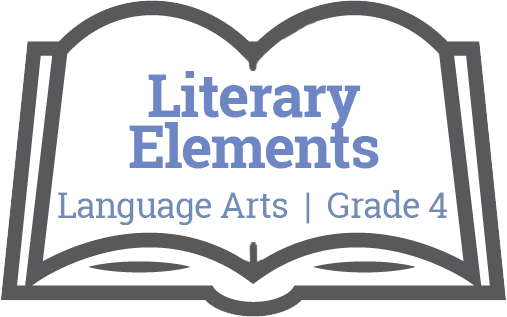
Unit Plan: Literary Elements in Fiction
Language Arts / Grade 4

Big Ideas
Using language in creative and playful ways helps us understand how language works.
Texts can be understood from different perspectives.
Concepts:
- Language
- Perspective
- Elements
Essential Questions
Students will keep considering…
- What makes a great story?
- How do you write a great story?
Evaluative Criteria
Rubric
- Collaboratively created with students prior to commencing writing.
- To include assessment of the use and effectiveness of each element, language feature, structure, and convention taught
- Could include assessment of art and comments with regards to use of technology as a tool.
Adaptation
- Peer scribes can be used to support slower printers/typist.
- Speech to text tools can be utilized for the above.
- As an extension once text is produced, voice recording features can be uses to create oral stories to remove barrier for less developed readers.
Monitoring Progress
Teacher will monitor progress:
Teachers can monitor progress through ongoing formative assessment including but not limited to:
N/A
Resources
WEBSITES
Reflection
How will teachers and their students reflect on and evaluate the completed project?
A self-reflective journal writing in answer to the essential questions for this unit:
- What makes a great story?
- How do you write a great story?
Teacher Unit Reflection:
- What aspects of the unit went well
- What did students struggle with
- What did you struggle with?
- What would you add/revise the next time you taught this unit?
- Were there any unintended outcomes?
- Were students engaged?
Teacher:
Next time I teach this unit I would…
Student:
My students needed:
Process:
Product:
Content:
Downloads
Unit Overview
Subject
Language Arts
Topic
Literary Elements in Fiction
Unit Overview
This unit introduces students to Literary Elements in Fiction. Teachers can use Fairy Tales/Fables/Legends from a variety of cultures or Short stories for more advanced study.
Grade
4
Unit Duration
4 weeks
Related Big Ideas
Arts Education

The following resources are made available through the British Columbia Ministry of Education. For more information, please visit BC’s New Curriculum.
Big Ideas
The Big Ideas consist of generalizations and principles and the key concepts important in an area of learning. The Big Ideas represent what students will understand at the completion of the curriculum for their grade. They are intended to endure beyond a single grade and contribute to future understanding.
Core Competencies
 Communications Competency
Communications Competency
The set of abilities that students use to impart and exchange information, experiences and ideas, to explore the world around them, and to understand and effectively engage in the use of digital media
 Thinking Competency
Thinking Competency
The knowledge, skills and processes we associate with intellectual development
 Social Competency
Social Competency
The set of abilities that relate to students’ identity in the world, both as individuals and as members of their community and society
Curricular Competencies & Content
Curricular Competencies are the skills, strategies, and processes that students develop over time. They reflect the “Do” in the Know-Do-Understand model of curriculum. The Curricular Competencies are built on the thinking, communicating, and personal and social competencies relevant to disciplines that make up an area of learning.
Additional Resources
First People's Principles of Learning
To read more about First People’s Principles of Learning, please click here.
For classroom resources, please visit the First Nations Education Steering Committee.
